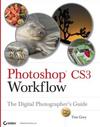作者:Tim Grey
出版日期:2007
出版社:Wiley Publishing
页数:354
ISBN:978-0-470-11941-9
文件格式:PDF
We’re in the midst of a genuine renaissance in photography. Although in the middle of the
twentieth century, it seemed that everyone was a photo-enthusiast and basement darkrooms
were commonplace, color transparency photography and the proliferation of one-hour labs
brought about the demise of the home darkroom. Amateur enthusiast photographers, and
even many professionals, migrated away from the do-it-yourself kind of control of earlier
years. But now, digital darkrooms and high-resolution digital cameras have brought us back
from the laissez faire way of dealing with photographs—press the button and you’re done—
to an environment where once again the photographer takes complete control over the image
from exposure to output.
When I worked in a black-and-white darkroom in school, taking a stack of photo
paper and my negatives into that room was like activating a time machine: I would be catapulted
hours ahead without necessarily having accomplished anything. My early days learning
the digital darkroom did the same thing, except that I also got a sizable dose of frustration
to add to the loss of hours. Until my workflow was consistent and efficient, I spent far too
much time learning about computers and far too little making my photographs as good as
possible.
Workflow is the great buzzword in digital imagery. Everyone wants to know how to
establish a good workflow, how other people have set up their workflow, what constitutes
an efficient workflow, etc. As photographers, we are concerned about workflow for good
reason. Back in the age of film, the workflow was established by the parameters of the medium
itself. You exposed the film, sent it to a lab for processing, and made a print or sent the
image for prepress. But digital processes don’t lend themselves to such a linear progression.
Every step in the production of a digital image seems able to take on a new set of possible
twists and turns, some of which are productive and some of which are a waste of time.
Although no longer in its infancy, digital imagery is still very much a child on the
verge of adolescence. Like that awkward stage of growth and exploration, things are uncertain:
there has been no established method to set up a workflow. Photographers have essentially
resorted to asking each other, “What do you do?” and then tried to emulate and adopt
others’ ideas. In Photoshop CS3 Workflow, Tim Grey has cut through that trial-and-error
system and gives us a methodical and logical means to design an efficient and effective
workflow.
Tim Grey has a unique talent for being able to see through the extraneous details and
cut right to the core of a problem. As he tackles setting up a workflow, Grey identifies the
necessary elements involved and then shows in clear steps how to gain control over those
elements to make the problems of workflow disappear into the background.
The best workflow is one that you shouldn’t have to think about. We’re photographers,
not workflow analysts. The real strength of this book is in how it will help any photographer
establish a workflow that is simple and doesn’t become a distraction. After all, whether you’re
a pro or an amateur enthusiast, making better images is the goal.






 评论 (0)
评论 (0) 